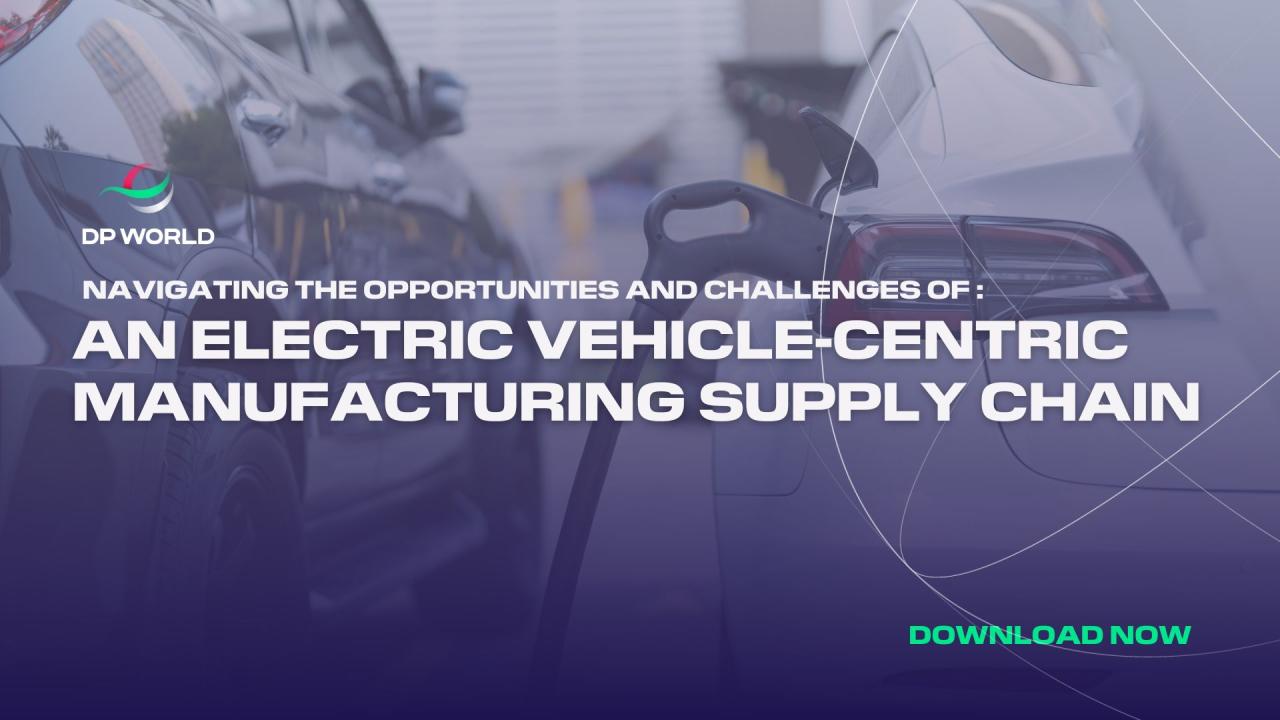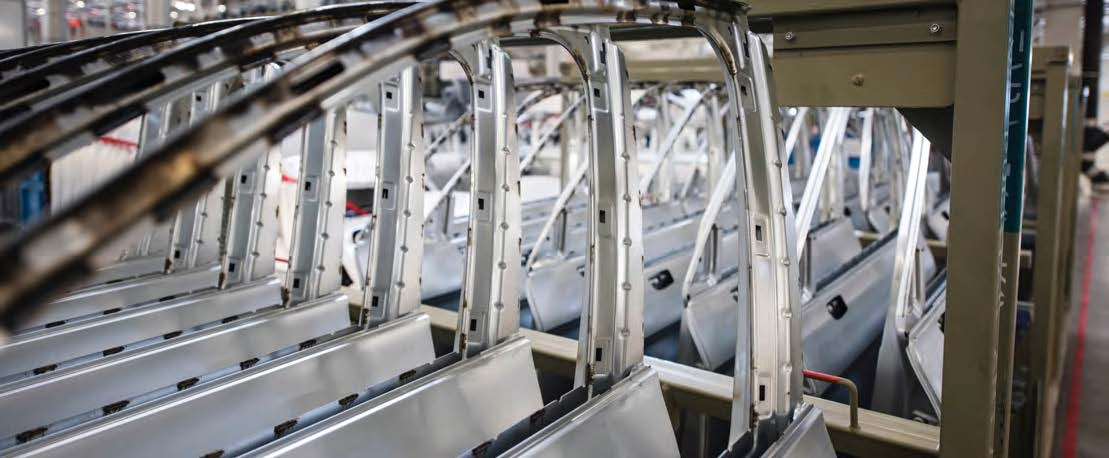Four Key Areas: Navigating Electric Vehicle Supply Chain Dynamics
Published 03-26-25
Submitted by DP World

The automotive industry continues to evolve as the growing demand for electric vehicles (EVs) continues to reshape the industry and global manufacturing supply chains. This transformation is not just about the vehicles we drive; it's about a comprehensive overhaul of the entire manufacturing and logistics ecosystem.
Recent trends and forecasts underscore the magnitude of this shift. Reuters reports that globally, sales of fully electric vehicles and plug-in hybrids rose 25.6% year-on-year to 1.9 million in December 2024, totaling a record 17.1 million units sold for the year. In the U.S., EV sales reached 1.3 million units in 2024, marking a 7.3% increase from the previous year.
According to RMI, a leading think tank, EVs are projected to dominate global car sales by 2030, potentially accounting for 62% to 86% of all sales. This prediction aligns with data from Kelley Blue Book, which reported record-breaking sales of EVs in the U.S. during the first three quarters of 2023.
The International Energy Agency (IEA) projects that, based on manufacturers' targets, between 42% and 58% of global car sales could be electric by 2030. In the U.S., research indicates that EVs are on track to comprise 50% of new car sales by 2030, despite recent concerns about a slowdown in sales.
But the transition to EVs is complex – presenting both opportunities and challenges – and will impact manufacturing supply chains in several key areas across the board.
In this ever-evolving landscape, it's crucial for stakeholders in the automotive and logistics sectors to understand and prepare for the changes that lie ahead. Here are four key areas that will be impacted by this transformation:
1.The Central Role of Batteries:
In the EV landscape, batteries emerge as the most critical and costliest component. This is driving focus on the proximity between battery production and EV assembly lines. The shift to EVs necessitates changes in factory infrastructure and logistics, along with specialized storage and transport solutions to address safety concerns and to accommodate the substantial weight and size of batteries.
2. Transforming Factory Floor Logistics:
Adapting to EV production requires substantial alterations in traditional car manufacturing facilities, such as new equipment for heavy battery handling. This includes a transformation in logistics, from traditional manufacturing processes to methods that accommodate the distinct nature of EVs. Including changes in storage, transport, and delivery to ensure safety and efficiency.

3. Changing Demands for Parts and Service:
Low-maintenance EVs offer a significant reduction in the number and complexity of parts and maintenance services compared to internal combustion engine vehicles. This evolution is leading to changes in supply chain and logistics practices, with a move towards more streamlined and efficient processes.

4. Integration of Circular Economy Principles:
An interesting aspect of the shift towards EVs is the potential for a circular economy. The report emphasizes the importance of repurposing reusable minerals for new batteries, reducing dependence on imported minerals. This approach enhances supply chain reliability, reduces geopolitical risks, and aligns with our commitment to environmental sustainability.
The automotive industry will continue to evolve as it transitions towards EVs, and companies should be preparing now to navigate this transition. It's imperative that stakeholders in the automotive and logistics sectors understand the implications today, so that they can plan for their supply chains of tomorrow.
DP World’s report, Navigating the Opportunities and Challenges of an Electric Vehicle-Centric Manufacturing Supply Chain, examines how the transition to EVs is impacting supply chains and offers valuable insights into how companies can navigate this transition, highlighting both the challenges and opportunities ahead.
To learn more, visit DP World’s website and download the report.

DP World
DP World
Trade is the lifeblood of the global economy, creating opportunities and improving the quality of life for people around the world. DP World exists to make the world’s trade flow better, changing what’s possible for the customers and communities we serve globally.
With a dedicated, diverse and professional team of more than 103,000 employees spanning 75 countries on six continents, DP World is pushing trade further and faster towards a seamless supply chain that’s fit for the future.
We’re rapidly transforming and integrating our businesses -- Ports and Terminals, Marine Services, Logistics and Technology – and uniting our global infrastructure with local expertise to create stronger, more efficient end-to-end supply chain solutions that can change the way the world trades.
What's more, we're reshaping the future by investing in innovation. From intelligent delivery systems to automated warehouse stacking, we’re at the cutting edge of disruptive technology, pushing the sector towards better ways to trade, minimising disruptions from the factory floor to the customer’s door.
WE MAKE TRADE FLOW TO CHANGE WHAT'S POSSIBLE FOR EVERYONE.
More from DP World

